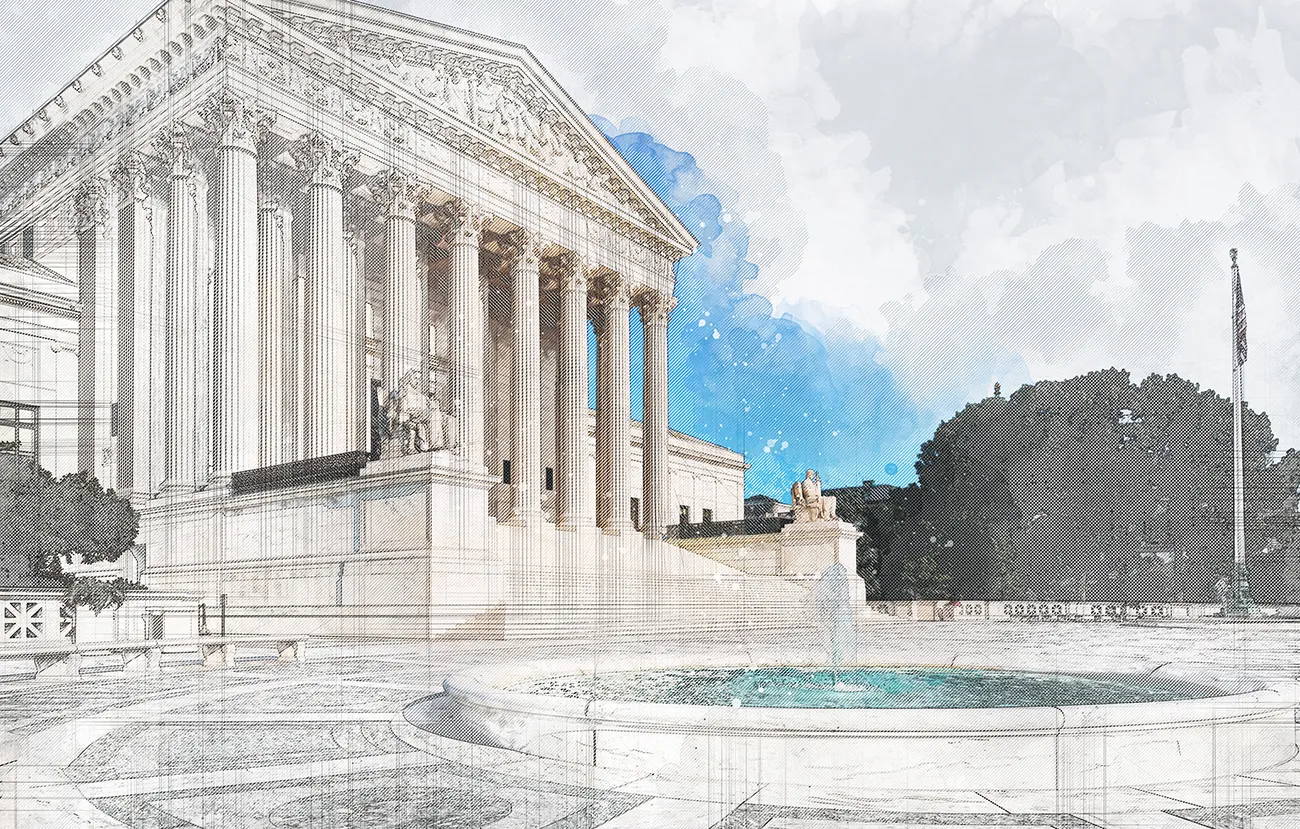In SAS Decision, Appellate Court Dodges Addressing Oracle
In a decision issued today, the U.S. Court of Appeals for the Fourth Circuit affirmed the district court’s ruling in SAS v. World Programming Limited that WPL breached its license with SAS when it reverse engineered SAS’s computer program to develop an interoperable program. The Fourth Circuit also ordered the district court to vacate its ruling that WPL did not infringe SAS’s copyright by replicating the input and output formats of the SAS program because this ruling was moot. (DisCo discussed the district court’s decision here.)
From an interoperability perspective, the Fourth Circuit’s decision is a mixed result. It could have been worse; the Fourth Circuit could have reversed the district court’s copyright ruling. On the other hand, it could have been better; the appellate court could have affirmed the district court’s ruling. Instead, the uncertainty regarding the scope of copyright protection created by the Federal Circuit’s decision in Oracle v. Google remains. (DisCo frequently has discussed the Oracle case, most recently here.)
The Facts
SAS, a company based in North Carolina, creates an integrated suite of business software products known as the SAS System. The SAS System allows users to perform a variety of data access, management, analysis, and presentation tasks. The SAS System can run on various kinds of computers ranging from PCs to mainframes. Users can perform tasks on the SAS System by writing programs in the SAS Language. Additionally, SAS developed a version of the SAS System called SAS Learning Edition to help users learn how to program in the SAS Language.
World Programming Limited (“WPL”), a U.K. company, developed World Programming System (“WPS”), which can run SAS Language programs and produce similar outputs. Thus, WPL provides users with a competing platform on which they can run the programs they have written in the SAS Language, thereby avoiding being locked-in to the SAS environment.
To develop WPS, WPL reverse engineered copies of the SAS Learning Edition. However, the license under which WPL obtained SAS Learning Edition prohibited reverse engineering of the software. It appears that WPL’s development activities occurred in the U.K., but it distributed its software in the United States. SAS sued WPL in the U.K. in 2009 and in the U.S. in 2010.
The U.K. Litigation
The U.K. case proceeded quickly. The U.K. courts easily concluded that SAS Learning Edition license prohibition on reverse engineering was not enforceable pursuant to the EU Software Directive, which voided contractual restrictions on reverse engineering permitted under the Directive.
The U.K. courts had more difficulty with the protectability of the program elements WPL copied. The U.K. High Court requested guidance from the highest court in the European Union, the Court of Justice of the European Union (“CJEU”), on whether software functionality, programming languages, and data formats were protectable under the EU Software Directive. The CJEU ruled in 2012 that these elements were not protectable. On the basis of this ruling, the U.K. court entered final judgment for WPL in 2013.
The U.S. District Court Litigation
In April 2014, WPL moved for summary judgment in the U.S. action in North Carolina, arguing that the U.K. judgment had preclusive effect on many issues under theories of comity and collateral estoppel. In other words, WPL argued that SAS couldn’t re-litigate in the United States what it had already lost in Europe.
The district court ruled on the summary judgment motion in October 2014. The district court found that North Carolina law differed significantly from EU law on the question of the validity of the contractual provisions prohibiting reverse engineering. Thus, the district court granted summary judgment to SAS on its breach of contract claim.
With respect to SAS’s copyright infringement claim, the district court refused to give preclusive effect to the U.K court’s ruling that copyright did not protect the program elements WPL copied. Nonetheless, the district court reached the same conclusion based on its own analysis of U.S. copyright law. The district court reasoned that SAS in essence was “asking the court to find that defendant’s software infringes its copyright through its processing of elements of the SAS Language….” This meant that “plaintiff seeks to copyright the idea of a program which interprets and compiles the SAS Language….” The court refused to allow such broad protection.
A trial was held on damages for WPL’s breach of the SAS Learning Edition license; fraudulent inducement in obtaining the Learning Edition; and violation of North Carolina’s Unfair and Deceptive Trade Practices Act (“UDTPA”). In 2015, the jury found SAS was damaged by WPL’s breach of the license in the amount of $26 million; WPL fraudulently induced SAS to enter into the license agreement; and WPL’s conduct violated the UDTPA. On account of the violation of the UDTPA, the district court trebled the actual damages to a total of $79 million.
The Appeal
WPL and SAS cross-appealed. In their briefs, SAS and its amici, MathWorks and BSA | The Software Alliance, completely ignored what the copyright aspect of this case was really about: whether copyright enables SAS to lock its users into the SAS System after they have invested millions of dollars writing their own programs in the SAS Language. In contrast, CCIA, the Internet Association and Engine filed an amicus brief that squarely addressed interoperability, arguing that the SAS input and output formats were outside the scope of copyright protection. In many respects, the briefs framed the copyright issue as a referendum on the Federal Circuit’s Oracle v. Google decision. SAS and its amici urged the Fourth Circuit to follow Oracle, while WPL and its amici argued for rejection of Oracle. Ultimately, however, the Fourth Circuit punted on the copyright issue, finding that it was moot.
In its opinion, the Fourth Circuit panel first rejected WPL’s argument that the U.K. litigation barred the U.S. action under the doctrine of res judicata. To be sure, the claims “in both lawsuits revolve around WPL’s acquisition of the Learning Edition, creation of a competitor product, and sales of that competing product.” However, the copyright claims in the two cases “were based on the copyright laws of different countries and on different sets of sales transactions.”
Moreover, with respect to the contract claim, “North Carolina public policy and E.U. public policy are in clear conflict.” The panel explained that “the E.U. Directive that was dispositive of the contract claim in the U.K. litigation has no equivalent in North Carolina.” Rather, “the United States has taken an approach that is more protective of intellectual property, and North Carolina courts have taken an approach that is more protective of the sanctity of contract.”
The panel also rejected WPL’s argument that SAS’s contract contained ambiguous terms. Because the contract was not ambiguous, and the U.K. court’s dismissal of the contract claim was not res judicata, the panel upheld the district court’s finding that WPL had breached the contract by reverse engineering the Learning Edition.
The panel then turned to SAS’s request for a permanent injunction based on its successful contract claim. The panel found that the district court correctly had denied SAS an injunction. The injury SAS suffered was not irreparable. In particular, the panel noted that SAS asked for and received an award of over $12 million for future damages. The monetary damages SAS was awarded were not inadequate; “to hold that the possessor of a $79 million judgment has received an inadequate remedy would be astonishing in the absence of firm evidence of that judgment’s illusory character.” The balance of hardships also militated against an injunction; “SAS is the world’s largest privately-held software company,” while granting an injunction would be ruinous for WPL. Finally, an injunction would not be in the public interest because of the harm it would inflict on WPL’s existing customers in the United States. “The customers would have to expend significant time and money to replace their existing WPS systems, either now or in the future.”
Next, the panel rejected SAS’s contention that it should receive an injunction on the basis of its copyright claim. The panel observed that it was “far from certain that the district court made an error of law by granting summary judgment to WPL on SAS’s copyright claim.” The panel noted that “the area of software copyright is a murky one, and federal courts have struggled with it for decades.” The panel added that “in the case before us, the parties offer competing visions of…where the line between functionality and creativity should be drawn in software copyrights.” On the one hand, “SAS cites the long tradition of extending copyright protection to even the bare minimum of creative expression….” WPL, on the other hand, “points to the longstanding doctrine that copyright does not cover the functional aspects of even creative works….” The panel concludes that the parties’ dispute “goes to the very heart of the difficulty in drawing the line between protected and unprotected expression in the software context.” The panel concludes that “given how strongly the traditional equitable factors weigh against the issuance of injunctive relief in this case, it is hard to conceive how the outcome of what is a close copyright claim would lead to SAS receiving such relief.”
The panel could have stopped there. Because it affirmed SAS’s contract claim, but denied a permanent injunction on both the contract and copyright claims, it did not need to reach the validity of the district court’s copyright ruling. However, the panel, on its own, without the urging of either party, decided that it needed to satisfy itself “of the existence of a live dispute” concerning the copyright claim. The panel stated that a claim is moot when the parties lack a legally cognizable interest in the outcome. Judicial resolution of a moot claim is effectively advisory and thus impermissible. The panel found that the justification for this doctrine is “particularly apparent where, as here, the parties ask us to resolve a difficult question of law in a rapidly evolving context, such as software copyrights.” The only relief that SAS sought from the copyright claim that it had not already received from its other claims was an injunction. However, the panel held that SAS would not have received an injunction even if it were to have prevailed on its copyright claim. Accordingly, “the legal resolution of the copyright question would have no effect on the relief afforded the parties.” The copyright claim is moot “absent as practical effect on the outcome of this case.” On this basis, the panel vacated the district court’s ruling on the copyright claim, and directed the district court to dismiss it on remand.
The Fourth Circuit’s desire to avoid wading into the scope of copyright protection thicket when it didn’t need to is understandable. But it could just have declined to reach the issue instead of vacating the district court’s ruling. This would have left the district court’s copyright ruling standing so as to provide helpful guidance to other parties—and courts—on the unprotectability of input and output formats.
The main policy implication of the panel’s opinion is its highlighting of the wisdom of the Software Directive’s prohibition on the enforcement of contractual restrictions on reverse engineering. The Directive contains detailed exceptions permitting reverse engineering, particularly for the development of interoperable products. The European Commission recognized that it made little sense to include specific pro-competitive exceptions in the Directive when they could be nullified by a term in a license unilaterally imposed by the software vendor. In other words, the Commission valued the preservation of competition above the “sanctity of contract.”








